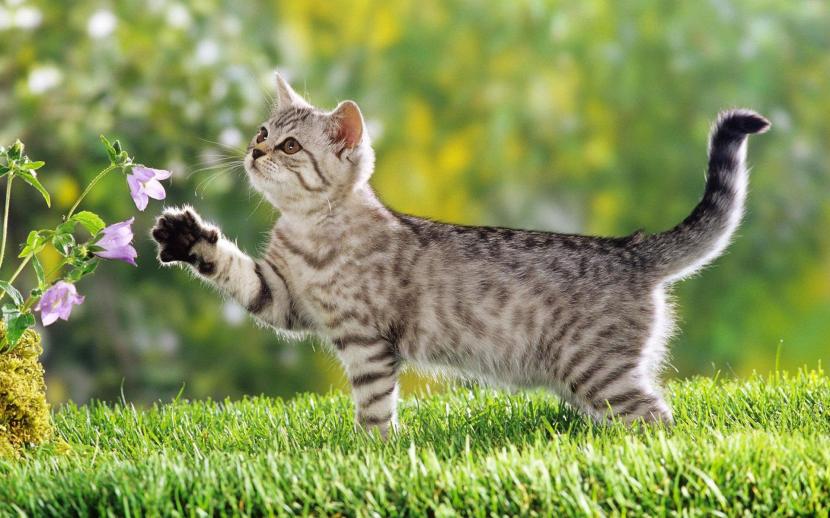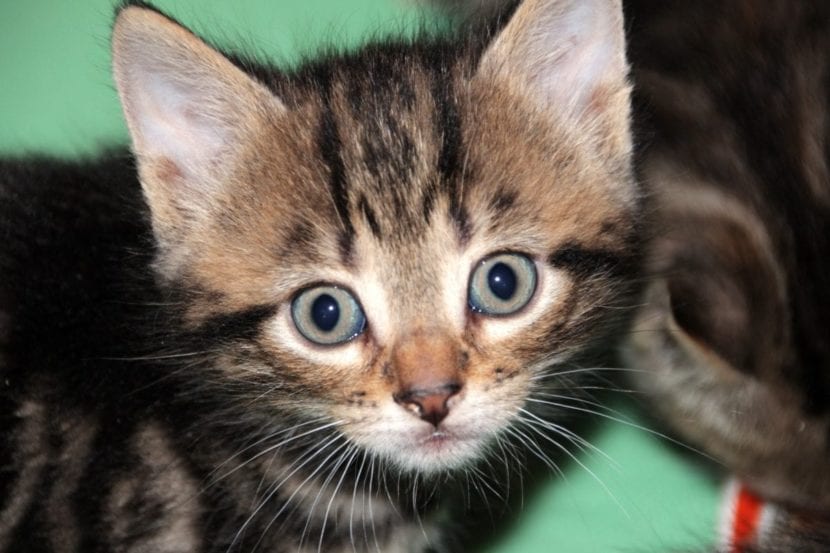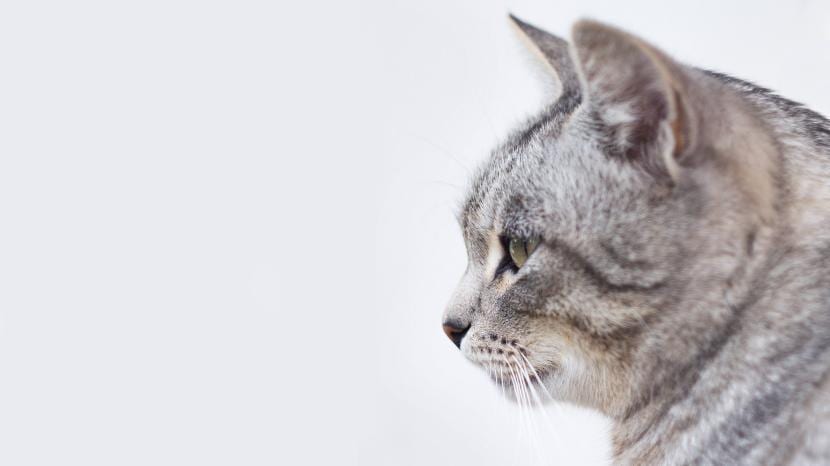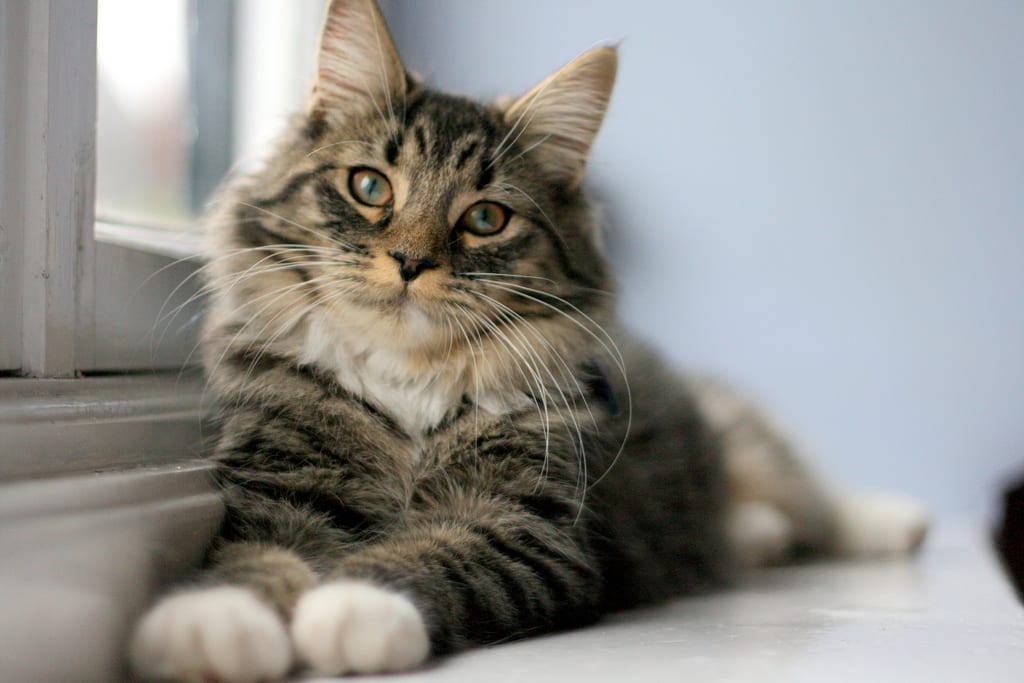
Cats have a very peculiar way of walking. Until recently it was believed that they did it like most four-legged animals, but the truth is that we were wrong. And a lot. But it is not for less, since there are very few who do the same. In fact, only camels, giraffes, and of course cats do.
But How do cats walk?
How do they walk?

Very seldom do we hear the footsteps of our friends. Actually, I can tell you that I myself only realize that they are getting closer ... when they are close. Yes, yes, they have such a perfect walk that you can only hear them when they play tag. This particularity is something that comes in handy when it comes to going unnoticed, since it makes hunting much easier. Even if we play games with him in which he must catch the toy, we will see how he shows his predatory behavior: fixed gaze, crouched body, barely moving his tail, and when he feels that the moment has come, attacks with hardly any noise.
The cats, when they walk, support the weight of the body on the fingers of the hand, and not in the hand itself. In addition, thanks to the pads and its nails, which are retractable (that is, they remain hidden until the animal decides to remove them), silence is guaranteed.
By the way, did you know that cats walk in a perfect way? Yes, yes, the sequence of the movement of its legs is as follows: rear left leg, front left leg, rear right leg, front right leg. This means that for a moment the legs on one side remain suspended in the air. But there is more: with their hind leg they step on almost the same place where their front leg left the mark, according to the writer Wendy Christensen.
When do cats start walking?

Seeing a kitten gliding on the ground is something that melts your heart. For him, it is a learning experience not without falls, but we are not going to deny it: it is very nice to see him learn. More than once he makes us smile, and we may even be tempted to help him a bit by holding him down.
But the kitten, like all of us born with limbs, has to learn to walk on its own through trial and error. And this does it relatively fast: with two months he will have developed enough to be able, not only to walk, but also to run. Let's see how you learn:
- 0-2 weeks: born knowing how to crawl, by pure instinct. It is the way he has to get close to his mother, from which he can drink his milk, and keep warm.
- 2-3 weeks: little by little its legs get stronger, so it begins to lean on the hind legs when it is, for example, in a box or low-height cradle on the ground.
- 4-6 weeks: at this age it is normal for him to walk. But it still stumbles and falls sometimes, since the tail, which acts as a rudder, is not yet fully developed and has not yet mastered coordination.
- 6-7 weeks: when the kitten is about a month and a half, he will know how to walk almost like an adult cat.
- 8-10 weeks: learns to jump and climb, but does not yet know how to descend on his own. This is a skill that you will learn over time; and in fact, there are adult cats - homemade, that have never been outside - that may need help to get down.
- From 11 weeks on: your body, as it develops, will increasingly perfect its skills, all of them, those of walking, jumping, climbing, etc.
Can they live without legs? How do amputations affect cats?

We all know how important it is to have, in our case, legs, and in that of felines, legs to be able to walk, move from one place to another or even protect themselves. But the truth is that if our beloved feline has a disease or has suffered a traumatic accident, the vet may have told us that it is better to amputate perhaps a leg, or some, or all, or perhaps the tail. Our reaction is usually one of concern: can it live without legs or without a tail?
The truth is that cats have a strong sense of adaptation, and since they only care about the present moment, it is much easier for them to get used to their new situation. Anyway, let's see how the amputation of any of its parts can affect your feline:
Glue
The tail, as we said before, is the rudder of your body, which helps you - along with your ear - to maintain balance and change position when you jump if necessary. You might think that the cat that is left without it will become clumsy, and it may be so at first but you will get used to it, I repeat, the ear is the other responsible for the balance. Also, there are many cats that are born without it, and no problem 🙂.
Pins
The legs are a more complicated subject. If you only have one amputated, you will learn to move easily as you regain your confidence and self-assurance.
In the event that there are two or more, that animal will depend a lot - more - on us, because it will need help to get closer to its feeder and drinker, bed, sandbox, etc. We can talk to the vet about putting a prosthesis for cats, so that the animal can continue to lead a normal life.
How to prevent the cat from losing any of its legs?

The cat is a very curious animal, and it is not uncommon for it to have accidents. But those accidents can simply be avoided putting some protection at home, such as nets on the windows so that they do not jump, keeping glass, ceramic and porcelain things well stored, and ultimately, ensuring that there is no danger for him.
Really, it is important to stop thinking that the cat will not jump from a fourth or fifth floor (for example), because it will if it sees a bird or something that catches its attention. And nets are very cheap: for about ten euros you can protect the life of your animal, think about it. Ten euros in exchange for a life.

I hope this article has been useful to you.